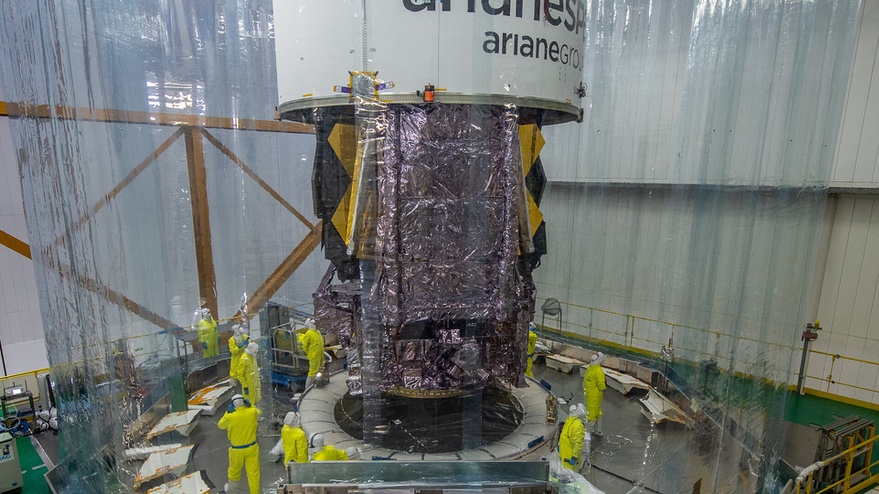WASHINGTON — A $10 billion space telescope that has suffered years of delays because of technical problems will have to remain on Earth at least one more day, this time because of poor weather.
Arianespace announced Dec. 21 that “adverse weather conditions” at the launch site in French Guiana led it to postpone a scheduled Dec. 24 launch of NASA’s James Webb Space Telescope on an Ariane 5. The launch is now rescheduled for 7:20 a.m. Eastern Dec. 25, pending improved weather. That launch window runs until 7:52 a.m. Eastern.
Arianespace, the European Space Agency and NASA did not elaborate on the specific weather conditions that, more than two and a half days before liftoff, prompted the delay. However, during a call with reporters a few hours before the announcement, Jérôme Rives, vice president of the Ariane 5 business unit at Arianespace, said one issue was upper-level winds.
“We have one potential concern regarding the higher altitude winds,” he said, noting it would be examined at a weather briefing scheduled for shortly after the media call. “We are going to look at that very accurately in about an hour to assess the situation for the 24th of December and see whether we can launch on that date.”
At that briefing, NASA announced that the telescope had successfully completed a launch readiness review, keeping the mission on track at the time to launch on Dec. 24. Other than the weather, officials said they were not tracking any technical issues that oculd cause a launch delay. “The observatory is in good health and ready to go,” said Greg Robinson, JWST program director at NASA Headquarters.
The launch slipped from Dec. 22 to Dec. 24 last week because of a communications issue between the spacecraft and ground support equipment that delayed a final “aliveness test” of JWST before it was encapsulated within the Ariane 5 payload fairing. While NASA officials said last week that the problem had been resolved, Robinson said the problem persists but should not affect the launch.
“It’s pretty minor. We can launch with it, but we’ll get it resolved as soon as we get to the pad and powered up,” he said, noting it involved ground support equipment and not the spacecraft, and would not be an issue after liftoff. “We’re just getting some minor telemetry drops that we live with.”
During the media call, reporters complained about delayed and incomplete updates from NASA and other partners in the mission, ranging from the limited details about the recent communications problem that caused the two-day launch delay to a lack of specifics on critical post-launch activities, such as deployment of the spacecraft’s solar array, antenna and sunshield.
Thomas Zurbuchen, NASA associate administrator for science, said that NASA will coordinate information about spacecraft activities. “There was a day where we were not as fast as we should have been,” he said, an apparent reference to a launch update that was expected Dec. 17 but not released until Dec. 18. “Rest assured we’re taking the lessons from it as we go forward to this deployment, where I know all of us want to know how it’s going.”
However, when asked for a single, authoritative web site for the mission, a NASA spokesperson on the call pointed instead to two, one on the main NASA.gov domain and a separate webb.nasa.gov site.
